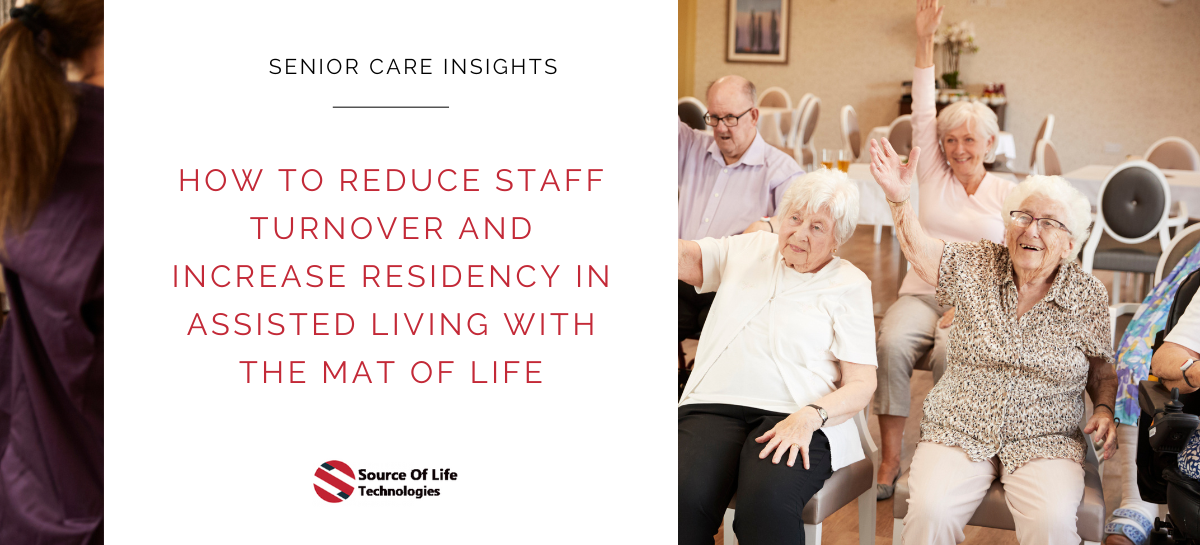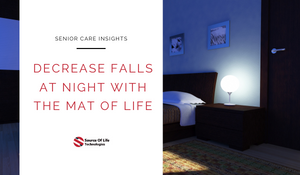How to Reduce Staff Turnover and Increase Residency in Assisted Living with the Mat of Life

Staff turnover and low resident occupancy rates are two of the biggest challenges facing assisted living facilities today. High turnover rates can lead to decreased quality of care and increased costs associated with recruiting and training new staff members. Meanwhile, low occupancy rates can make it difficult for facilities to remain financially viable. One potential solution to these challenges is the implementation of fall prevention training and proactive AI technology usage, such as the Mat of Life.
Fall prevention training can help staff members identify potential fall risks and take steps to minimize them. This training can include information about fall risk factors, such as medication use, environmental hazards, and mobility issues, as well as strategies for reducing these risks. Staff members who are well-trained in fall prevention techniques are more likely to be proactive in their approach to resident safety, which can lead to fewer falls and injuries. But you know this already!
How else can you be PROACTIVE in your Assisted Living Facility? AI technology usage, such as the Mat of Life, can also help to reduce fall risks, increase resident safety AND care team communication.
The Mat of Life is a smart mat that is placed at the resident's bedside, chair, bathroom or any entry point. It detects movement and pressure changes and alerts staff members, family and entire care teams of resident getting up and down habits. This technology can help staff members respond quickly to potential falls, preventing injuries and providing peace of mind to residents and their families through SMS messaging and audible alerts all on the mobile app.
In addition to fall prevention training and proactive AI technology usage, there are several other strategies that assisted living facilities can use to reduce staff turnover and increase resident occupancy rates.
- Create a Positive Work Environment: Staff members who feel valued and supported are more likely to stay with a facility for the long term. This can be achieved by offering competitive wages, benefits, and opportunities for professional development. Staff members should also be encouraged to provide feedback on facility operations and have their concerns addressed in a timely and respectful manner.
- Foster a Sense of Community: When residents feel connected to their peers and staff members both are more likely to stay in a facility. This can be achieved by offering social events, group activities, online engagement for care team notifications, and opportunities for resident input and participation in decision-making.
- Emphasize Quality of Care: Families are more likely to choose an assisted living facility that has a reputation for providing high-quality care. Facilities should prioritize resident safety and well-being, and ensure that staff members are trained to provide the best possible care using tried and true fall prevention methods as well as new technology opportunities to free up time and increase communication across care teams.
- Use Marketing Strategies: Assisted living facilities can use marketing strategies to increase awareness of their services and attract new residents. This can include online advertising, social media marketing, and targeted outreach to potential residents and their families. Offering a proactive fall monitoring opportunity to staff, families, and entire care teams can help increase your value as an organization.
Are you ready to learn more?
The implementation of fall prevention training and proactive AI technology usage, such as the Mat of Life, can help to reduce staff turnover and increase resident occupancy rates in assisted living facilities. However, these strategies should be combined with a focus on creating a positive work environment, fostering a sense of community, emphasizing quality of care, and using effective marketing strategies. By taking a proactive approach to resident safety and well-being, assisted living facilities can improve their reputation and attract more residents over time.
Falls in the senior community are far too common, costly, and preventable. Senior care fall strategies shouldn’t be reactive - they should be proactive. Just imagine if you could monitor, track, and address patient needs BEFORE a fall happens. This type of fall prevention initiative is available with Source of Life Technologies - Mat of Life - your modern fall prevention solution.
You can learn more about Mat of Life here.

